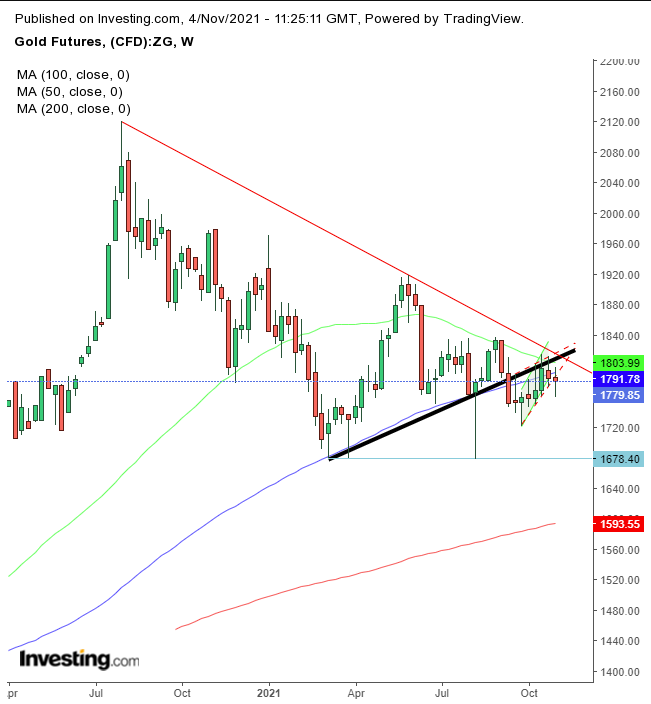Accepted wisdom has it that gold generally possesses a negative correlation to the dollar. So when the USD rises, the yellow metal usually falls. However, over the past two days, the precious metal has been moving in tandem with the currency.
The USD declined 0.27% on Wednesday, after the Federal Reserve policy meeting, when Chairman Jerome Powell clarified that trimming stimulus, via tapering bond purchases, does not equate to increasing interest rates. Cutting the Fed's bond-buying program was already priced in, and when the Fed's outlook for higher interest rates sprawled out to 2024, dollar bulls closed positions.
However, despite the dollar selloff yesterday, gold dropped a whopping 1.4%. That's because on Wednesday, 10-year yields surged over five basis points, as bonds were more attractive than non-yielding gold contracts.
The same positive synchronization between the dollar and gold resumed today. However, on Thursday, yields happened to fall.
So, what does this price pattern mean for the yellow metal? Here's what the chart is signaling.
The price of gold is struggling to remain within a daily rising channel, which, however, could prove to be a rising wedge. The latter is bearish, as disappointed traders who bet on a bottom see how prices churn and give up, closing out positions.
However, more critical than the significance of a pattern itself is its context. Note that it developed precisely below a possible weekly H&S continuation pattern.
And that's not all. The 100 WMA has perfectly realigned with the neckline of the H&S, then crossed below it, along with the price, adding resistance to the rising wedge.
The 50 WMA shaped the H&S, but then came crashing down into the wedge.
Finally, the H&S and the wedge are converging with the downtrend line since the August 2020 all-time high. It appears that the price is going to retest the $1,600 levels, where the precious metal found support during August of this year, which was also the March bottom, at the $1,600 level, where the 200 WMA awaits.
Trading Strategies
Conservative traders should wait for the price to fully complete the bearish wedge with a close below $1,700 and a return move that successfully retests the wedge's resistance.
Moderate traders would wait for the price to fall below $1,750, then wait for a corrective rally for a better entry, if not for confirmation.
Aggressive traders could short now, provided they accept the heightened risk commensurate with the higher rewards of beating the market. Money management is key. Here's an example:
Trade Sample
- Entry: $1,780
- Stop-Loss: $1,800
- Risk: $20
- Target: $1,720
- Reward: $60
- Risk:Reward Ratio: 1:3
Author's Note: This is just a sample to illustrate the key points of a basic trade plan. However, trading success is measured over multiple events. Results will vary based on your circumstances. If you don't know how to tailor a plan according to your budget, timing and temperament, feel free to use our samples for educational purposes, not for profit. Otherwise you'll end up neither learning nor profiting. Guaranteed. And there's no money back.
